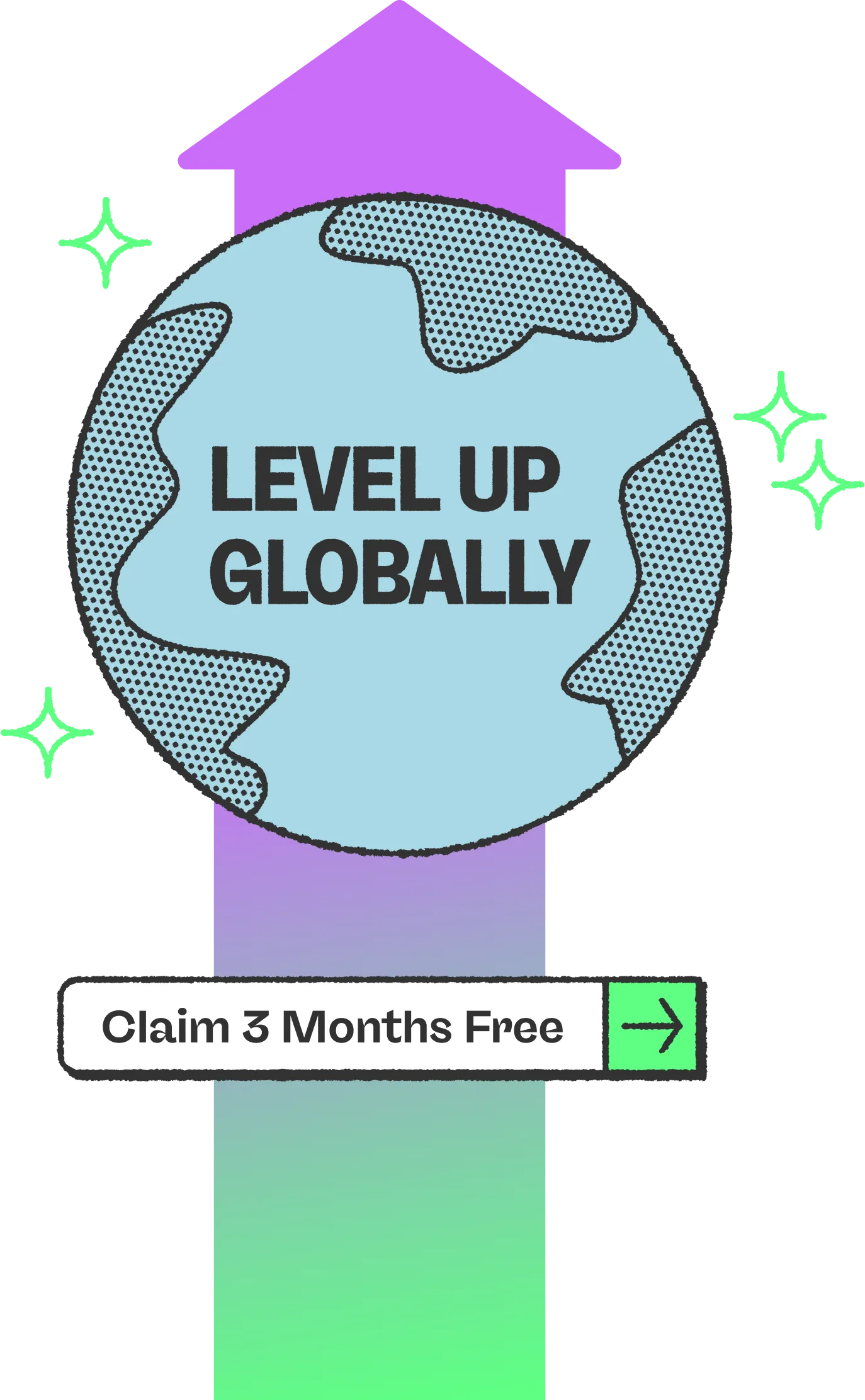What is vesting and how does it work?

Vesting
Attracting top talent in today’s world requires more than just offering a paycheck and standard benefits. Employees now expect a compensation package that rewards their contributions and long-term commitment beyond health care or paid time off. That’s why many employers offer equity compensation and employer-sponsored retirement plans as benefits. These rewards are valuable, but they’re typically earned on something called a vesting schedule.
A vesting schedule gradually gives employees ownership rights to employer contributions or equity grants over time or upon reaching specific milestones. For employers, vesting is a powerful retention tool that ties compensation to a long-term commitment. For employees, it guides financial planning by clarifying when they gain full ownership of company stock, 401(k) funds, or other assets.
Discover what vesting is, the different types of vesting schedules, and how Oyster can help your company build a robust and comprehensive compensation package.
What is vesting?
The term “vesting” refers to the point at which an employee gains legal ownership of benefits after meeting specific time or performance conditions. Once vested, the employee holds an irrevocable right to the benefit. This means it cannot be taken away, even if they no longer work for the company.
In employment settings, vesting typically applies to two types of benefits: employer-provided equity (such as stock options or restricted stock units, or RSUs) and employer contributions to retirement plans (such as 401(k)s). IRAs, which are personally funded, are not subject to vesting.
Before meeting the required milestones, these equity benefits remain unvested and are forfeited if the employee leaves the company. Once vested, however, the employee gains full, permanent ownership, enabling them to include these assets in their broader financial and retirement planning.
How does vesting work?
Vesting works by formally establishing a timeline and specific requirements through a vesting schedule. Each schedule includes vesting periods that specify the length of service—usually measured in months or years—needed for the employer to gradually release ownership of the asset. A vesting schedule also defines how and when an employee earns ownership of benefits, while the vesting period refers to the specific timeframe until full vesting occurs.
For example, some employers give employees stock options as part of their compensation package under a vesting schedule. This schedule might allow the employee to exercise their stock option at a discount in 25% increments every two years. That means there are four vesting periods of two years each, requiring eight years for the stock to fully vest. This incremental approach is sometimes called graded vesting.
Employers may also use cliff vesting schedules, where no ownership is granted until a specific date (known as “the cliff”) after which a significant portion or all of the benefit vests at once. If the employee leaves before the cliff, they forfeit the unvested assets and only keep those already part of their vested balance.
Vesting periods vary depending on the type of asset. The U.S. Department of Labor limits how long vesting can take for retirement plans, while equity vesting timelines are typically outlined in employment agreements.
Why is vesting important?
Vesting formalizes how future benefits and compensation are delivered to employees. It allows companies to confidently offer rewards like retirement matching or equity stakes while protecting against losses if employees leave prematurely. In this way, the practice functions as a critical employee retention tool.
Plus, being vested with a company reflects mutual investment: The employer makes a financial commitment, and the employee reciprocates through loyalty and performance.
Common types of vesting schedules
Vesting helps drive retention by unlocking the value of future compensation over time. Employers choose different vesting schedules, such as graded, cliff, performance, or immediate vesting, based on the type of benefit and their organizational goals.
Graded vesting
With graded vesting, employees earn ownership of employer contributions or equity awards in increments over time. This is most commonly used with 401(k) matches.
Let’s use the previous 25% per two-year vesting period scenario. If an employee leaves the company after four years, they’re 50% vested. This means they receive 50% of the employer’s contributions to their 401(k) as the vested balance. They forfeit the other half (the unvested amount). Graded vesting allows the employee to receive some financial benefit even if they don’t complete the entire vesting period.
Cliff vesting
Cliff vesting works more like a waiting period. During the cliff vesting period, the employee is 0% vested. Once they reach the cliff—often after a year for equity compensation—they’re 100% vested in that initial portion of their compensation.
For instance, in a four-year vesting schedule, 25% of RSUs might vest after the first year, with the remaining 75% vesting monthly over the next three years. Leaving before the cliff means forfeiting all unvested benefits.
Performance vesting
Unlike graded or cliff vesting, performance vesting unlocks some or all of a benefit when an employee or the company meets defined goals. These may include revenue targets, project milestones, and major events such as an IPO or acquisition.
This type of target-based vesting is typically used for high-level executives or highly skilled employees and is a common way to release RSUs.
Immediate vesting
With immediate vesting, there’s no waiting period or performance expectation. The employee receives 100% of their award immediately. Immediate vesting is less common with large stock option grants but more typical in employer-sponsored retirement plans.
What is stock vesting?
Stock vesting determines when employees gain ownership of their equity compensation, such as stock options, RSUs, and other forms of deferred compensation.
Employees who receive stock options under a vesting schedule don’t own those shares immediately. Instead, they earn the right to buy a certain number of shares at a fixed price in the future. With RSUs, employees get actual shares of stock, which they’re permitted to sell later. A vesting schedule applies, so employees must stay at the company for a certain period of time.
Companies may structure equity vesting schedules as time-based or milestone-based. For example, in a time-based arrangement, employees must stay with the company for a set amount of time before their options or shares are fully vested. Many companies opt for a one-year cliff, so a chunk of the shares or options vest after one year, and then the rest gradually vest over time.
What is 401(k) vesting?
A 401(k) is a company-sponsored, tax-advantaged retirement plan that allows employees to invest a portion of their paycheck, often with employer-matched contributions. Employees always own the amount they personally contribute to their 401(k) plans, but the employer match typically follows a vesting schedule, meaning ownership of those funds is earned over time.
After the vesting period—usually three to four years—employees become fully vested, gaining permanent ownership of both their contributions and the employer’s.
What is a vested balance?
A vested balance is the portion of the promised compensation an employee has earned ownership of—through tenure or performance—under their vesting schedule. Knowing their vested balance helps an employee plan their financial future in two primary ways:
- If they intend to leave the company, they’ll know how much they can take with them at separation.
- If they stay, they can anticipate when full ownership of their benefits will align with other retirement income and savings goals.
From an employer’s perspective, an accruing vested balance helps with employee retention, minimizes loss if an employee leaves prematurely, and eliminates the need to pay all benefits immediately.
What does it mean to be fully vested?
When an employee is fully vested, they have total ownership of the benefit or incentive they were originally offered. They have completed their time or performance requirement and have non-forfeitable control over their equity compensation or retirement funds.
With 401(k) plans, this refers to the employee match portion of the retirement account. For stock, it gives the employee the right to exercise their options or sell RSUs.
.webp)
Reward your teams beyond vesting with Oyster
Using a vesting schedule for equity compensation and retirement account benefits works best as part of a broader total rewards strategy to help attract top talent, provide incentives for highly skilled employees and top performers, and increase engagement and retention.
Combining vesting schedules with competitive pay, equity, and localized benefits creates a stronger overall employee experience. To make these programs effective across global teams, employers need the right tools and expertise to manage rewards consistently and compliantly.
Oyster can help simplify the process of building and managing compensation packages across markets, tailoring the basic elements and vesting schedules for restricted stock and other perks to meet local expectations, labor laws, and regulations.
See how Oyster’s Total Rewards services can help you implement a competitive plan that includes the appropriate vesting types and schedules.
About Oyster
Oyster enables hiring anywhere in the world—with reliable, compliant payroll, and great local benefits and perks.

Related Resources

.avif)

.avif)
.avif)
.avif)





